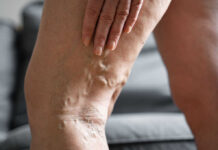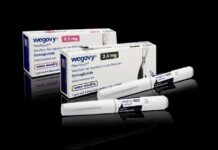
Smart rings are revolutionizing sleep health tracking with advanced sensors that monitor everything from heart rate to blood oxygen levels, offering users unprecedented insights into their nightly rest.
At a Glance
- New smart ring technology offers comprehensive sleep tracking with multiple sensors monitoring vital signs and sleep patterns
- The Oura Ring 4 features a “Smart Sensing” platform that adapts to individual finger physiology for improved accuracy and extended battery life
- Several smart rings now target sleep apnea monitoring, including the Ringconn Gen 2 and SleepImage Ring
- The FDA recently cleared the Happy Ring Health Monitoring System, though experts caution about using non-medically certified devices for clinical decisions
- Smart rings can now track metrics beyond sleep, including glucose levels and stress indicators
Advanced Sensing Technology
The latest generation of smart rings incorporates sophisticated sensor arrays that track multiple health parameters simultaneously. The Oura Ring 4, for example, utilizes a proprietary “Smart Sensing” platform that optimizes LED usage based on individual finger physiology. This technology not only improves accuracy but also extends battery life to approximately eight days. The ring contains sensors that monitor blood oxygen levels, heart rate, heart rate variability, respiration rate, skin temperature variations, and physical movement throughout the night.
Competing devices like the Ringconn Gen 2 offer similar capabilities with their own advantages. Made from lightweight titanium, the Ringconn boasts battery life up to 12 days depending on size. Its companion app features an AI assistant that helps users interpret their health data and maximize the benefits of wearing the device. The company has specifically positioned this ring as effective for those with sleep apnea concerns.
Medical Applications and FDA Clearance
While many smart rings began as consumer wellness devices, some are gaining recognition in medical settings. The SleepImage Ring represents a significant advancement in sleep apnea monitoring, allowing users to conduct at-home sleep studies. This device tracks key parameters including heart rate, blood oxygen levels, and snoring patterns, enabling remote monitoring by healthcare providers. For patients, this means fewer trips to sleep clinics and more comfortable assessment in their natural sleep environment.
The FDA recently granted 510(k) clearance to the Happy Ring Health Monitoring System, marking an important regulatory milestone. This ring includes sensors for broad-spectrum photoplethysmogram (PPG), continuous electrodermal activity (EDA), skin and ambient temperature monitoring, and an accelerometer. Such FDA clearance distinguishes the Happy Ring from consumer-only devices and potentially opens the door for integration into clinical care protocols.
Medical Validation Concerns
Despite growing popularity, health professionals express caution about relying too heavily on smart rings for medical decisions. The American Heart Association and American College of Cardiology have emphasized the need for scientific validation of health monitoring devices. While recognizing potential benefits for patient engagement and physical activity monitoring, they advise against using non-validated devices for clinical decision-making without proper medical oversight.
Most popular smart rings, including the widely-used Oura Ring, remain classified as consumer wellness devices rather than medical devices. This distinction is important for users to understand, as the accuracy standards differ significantly between these categories. Studies comparing consumer devices to gold standard sleep measurement tools show improvement in newer generations but still identify limitations in certain metrics.
Expanding Health Monitoring Capabilities
Smart ring technology continues to evolve beyond sleep tracking. Oura has recently introduced tools to help users monitor glucose levels for improved metabolic health, signaling a shift toward more comprehensive health monitoring. Many smart rings now track stress indicators through heart rate variability and skin conductance measurements. This expanding capability allows users to better understand the connections between sleep quality, stress levels, and overall health.
For adults concerned about their sleep health, smart rings offer a non-pharmaceutical approach to understanding and improving sleep patterns. Most devices provide personalized insights and recommendations based on collected data. Some health insurance plans now recognize the potential benefits of these devices, with options like FSA or HSA eligibility for certain smart rings and flexible payment options becoming more common as the technology gains mainstream acceptance.

















